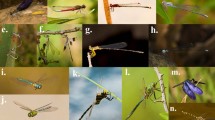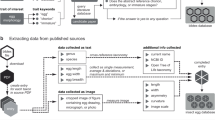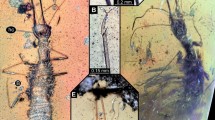Abstract
replying to T. Hörnschemeyer et al. Nature 494, 10.1038/nature11887 (2013)
Since the nineteenth century, Devonian insects have repeatedly proven to be something else1,2,3,4,5, the sole exception being Rhyniognatha. Recently the Devonian insect Strudiella devonica6 has been denied by Hörnschemeyer et al.7, who could not “confirm the presence of a mandible or of mandibular teeth”.
This is a preview of subscription content, access via your institution
Access options
Subscribe to this journal
Receive 51 print issues and online access
$199.00 per year
only $3.90 per issue
Buy this article
- Purchase on Springer Link
- Instant access to full article PDF
Prices may be subject to local taxes which are calculated during checkout

Similar content being viewed by others
References
Brongniart, C. Insectes fossiles des grès siluriens. La Nature, Paris 13, 116 (1885)
Agnus, A. Palaeoblattina douvillei, considéré d'abord comme un insecte est une pointe génale de trilobite. C. R. Acad. Sci., Paris 138, 398 (1904)
Sharov, A. G. Peculiar Paleozoic insects of the new order Monura (Insecta, Apterygota) [in Russian]. Doklady Akademii nauk. SSSR 115, 795–798 (1957)
Rohdendorf, B. B. Devonian eopterids were not insects but Eumalacostraca (Crustacea) [English translation]. Entomol. Rev. 51, 96–97 (1972)
Kühl, G. & Rust, J. Devonohexapodus bocksbergensis is a synonym of Wingertshellicus backesi (Euarthropoda) – no evidence for marine hexapods living in the Devonian Hunsrück Sea. Org. Divers. Evol. 9, 215–231 (2009)
Garrouste, R. et al. A complete insect from the Late Devonian period. Nature 488, 82–85 (2012)
Hörnschemeyer, T. et al. Is Strudiella a Devonian insect? Nature (this issue).
Author information
Authors and Affiliations
Contributions
R.G. and P.N. are first authors with equal rank; R.G., A.N., P.N., P.Gr., C.A.D’H., L.L., M.S.E., J.D., C.P., P.Gu. and S.O. drafted the manuscript and prepared figures. A.N. and P.N. coordinated the manuscript; G.C. coordinated and participated in fieldwork at the Strud locality and contributed to draft the manuscript; L.L., J.D., C.P., P.Gu., P.L. and S.O. also participated in fieldwork.
Corresponding author
PowerPoint slides
Rights and permissions
About this article
Cite this article
Garrouste, R., Clément, G., Nel, P. et al. Garrouste et al. reply. Nature 494, E4–E5 (2013). https://doi.org/10.1038/nature11888
Published:
Issue Date:
DOI: https://doi.org/10.1038/nature11888
Comments
By submitting a comment you agree to abide by our Terms and Community Guidelines. If you find something abusive or that does not comply with our terms or guidelines please flag it as inappropriate.



